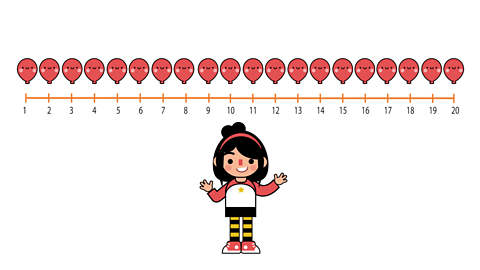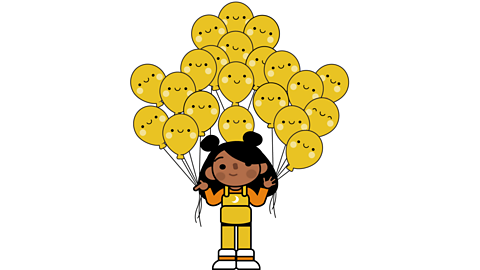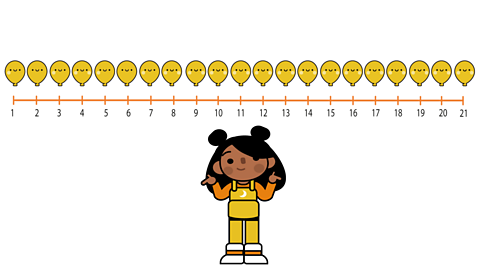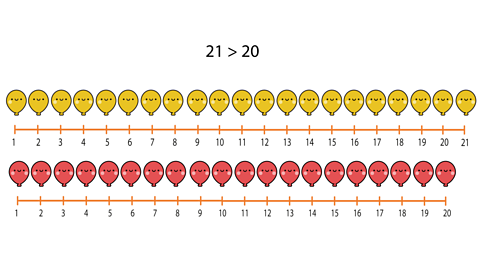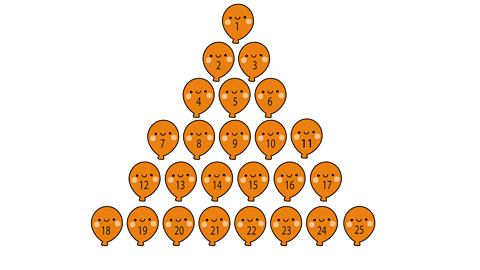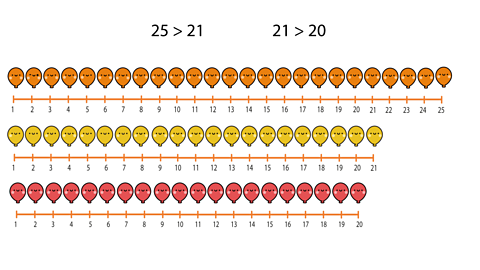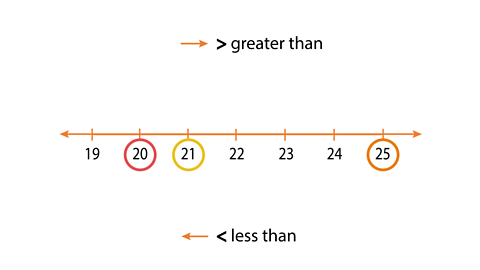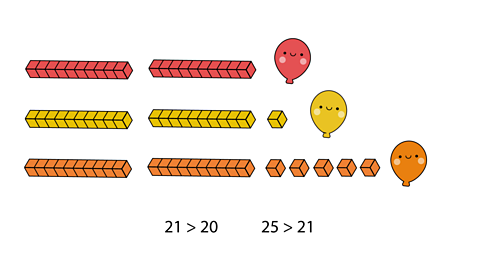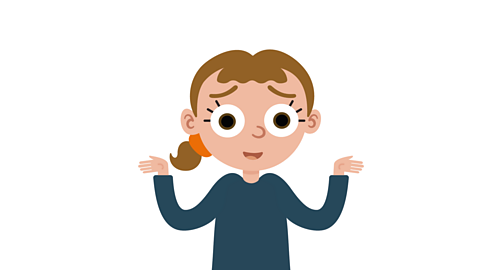
Less than or greater than?
When we are comparing numbers, we can use certain signs to show whether a number is less than, greater than or equal to another.
> means ‘greater than’
< means ‘less than’
= means ‘equal to’
To help you remember which sign to use, imagine the numbers you are comparing on a numberline.
If a number is further along the number line than another, it will be greater than the number you're comparing it to.
So > pointing towards the end of the number line means greater than.
If a number is closer to the start of the number line than another, it will be less than the number you're comparing it to.
So < pointing to the start of the number line means less than.


Comparing tens
Let's compare two numbers to find which is greater.
28 and 32
When we compare 28 and 32 we know we are comparing a number with 2 tens and a number with 3 tens.
The thirties comes after the twenties, so 32 is greater!
32 > 28
We can use a 100 square to help our thinking about which numbers come first.

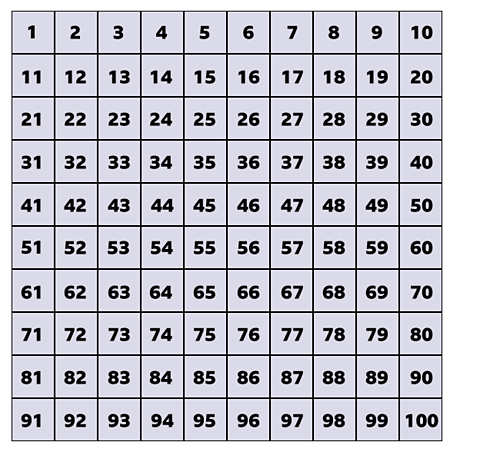

Comparing ones
If the numbers have the same number of tens, we need to think about how many ones they have.
Let's look at these numbers now.
38 and 31
38 and 3 are both in the thirties, but 38 comes after 31 on the 100 square, so we know 38 is greater than 31.
38 > 31

Example
Let's compare how many balloons Amy has with how many balloons Alesha has.
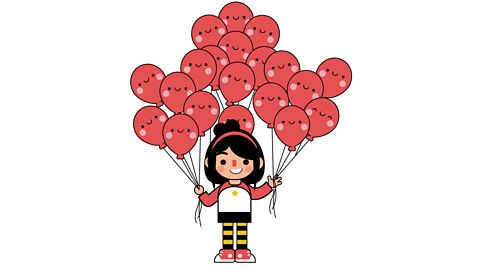
Image caption, How many balloons does Amy have?
1 of 9
Activity 1
These problems will help you practise comparing numbers and recognising the greater than and less than symbols.
Activity 2
These questions will help you build your confidence in comparing numbers up to 100.
BBC Bitesize newsletter. External Link
Sign up to our BBC Bitesize newsletter to receive monthly news, stories and updates on latest Bitesize content.

More on Counting and ordering
Find out more by working through a topic
- count1 of 17
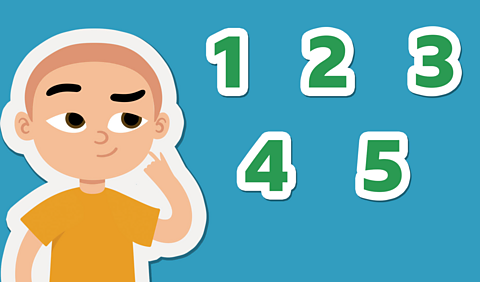
- count2 of 17
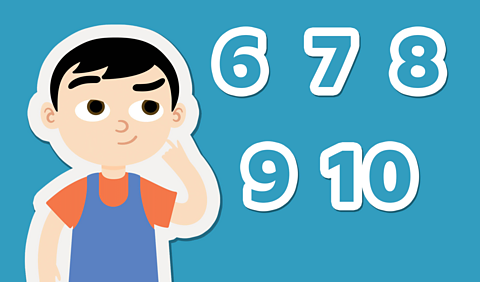
- count3 of 17
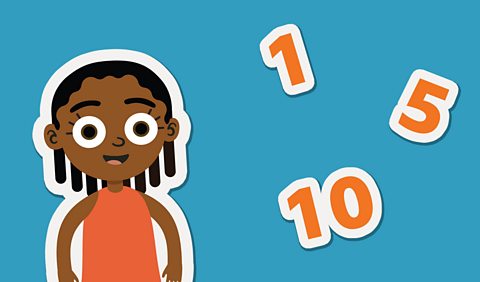
- count4 of 17

